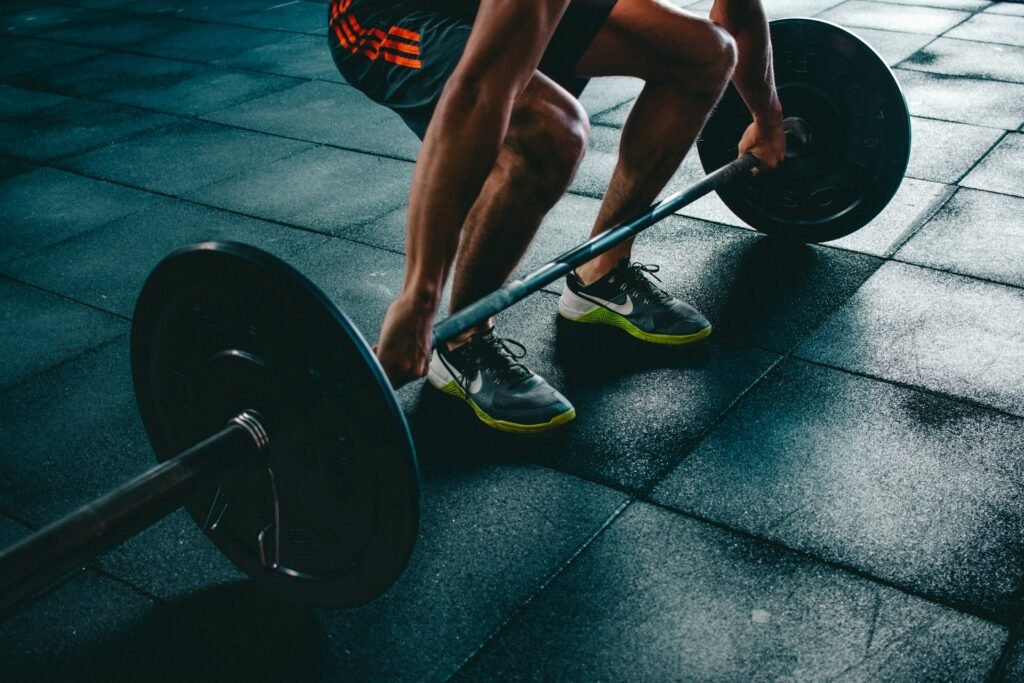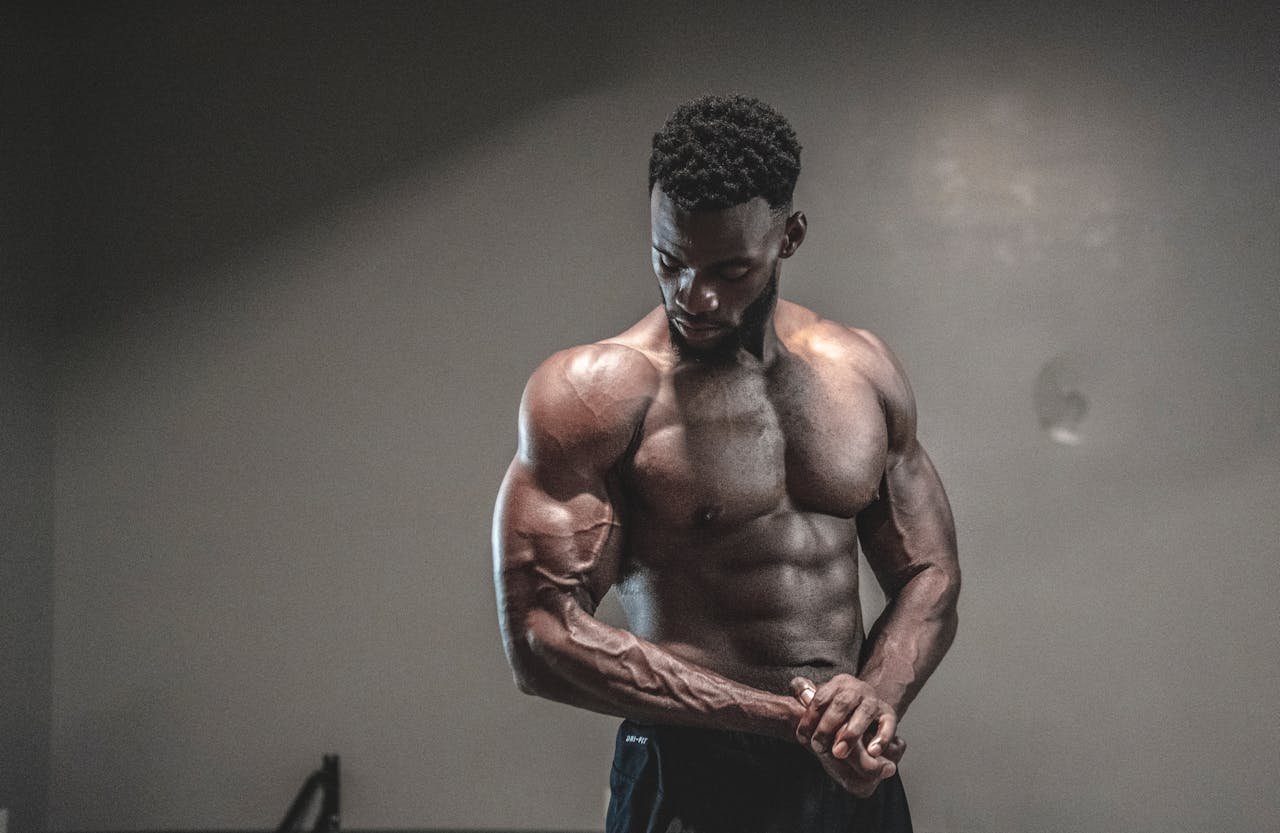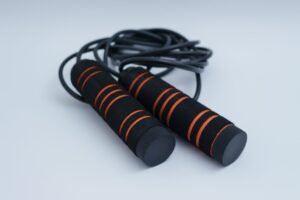If you’ve ever hesitated to lift weights because you “don’t want to get too bulky,” you’re not alone. The idea of Lean muscle vs bulky muscle pops up all the time — especially among beginners trying to figure out how to look “fit but not huge.”
So, is there a real difference between lean and bulky muscle? Kind of — but not in the way most people think.
Let’s clear things up so you can train confidently and hit your goals without the guesswork.
Disclosure: We may earn a commission from some links, at no extra cost to you. We only recommend products we genuinely trust
Table of Contents
1. Visual & Aesthetic Differences
There’s no biological difference between lean and bulky muscle — muscle is muscle. What really creates the difference in appearance is how much muscle you have and how much body fat is covering it.
- Lean Muscle: Looks defined, toned, and athletic. Think fitness models, sprinters, or swimmers. This look usually comes from having moderate muscle size and low body fat.
- Bulky Muscle: Looks fuller, thicker, and heavier. You’ll often see this in bodybuilders or powerlifters. The bulkier appearance is due to higher muscle mass and, sometimes, higher body fat or water retention.
The truth is, no one “accidentally” gets bulky overnight. Muscle growth is a slow and controlled process. As Sean Nalewanyj explains, even if you’re training perfectly, most men only gain about 1–2 pounds of lean muscle per month. Women build muscle even more slowly due to lower testosterone levels.

2. Training Methods
Your workout routine has a huge impact on whether you end up looking lean or bulky — not because it creates a different type of muscle, but because it affects how much you grow and how conditioned you are.
To build lean muscle:
- Train with moderate weights and higher reps (8–15 per set).
- Focus on full-body workouts, circuits, and functional training.
- Include cardio or HIIT to keep fat levels down.
- Keep rest periods shorter (30–60 seconds) to burn more calories during workouts.
This type of training builds strength and endurance while helping you stay lean and defined.
To build bulkier muscle:
- Lift heavy weights with lower reps (4–8 per set).
- Use more isolation exercises to target specific muscles.
- Take longer rest periods (90–180 seconds) between sets for recovery.
- Reduce cardio to avoid burning off your calorie surplus.
This is the kind of training used by people aiming to maximize size and mass over time.
3. Diet & Nutrition
If you want to look lean or bulky, your nutrition matters just as much — if not more — than your workouts.
For lean muscle:
- Eat at calorie maintenance or a small surplus.
- Focus on lean protein (chicken, fish, eggs), whole carbs, and healthy fats.
- Keep meals clean and portion-controlled to limit fat gain.
- Stay hydrated and avoid excess processed foods.
For bulky muscle:
- Eat in a large calorie surplus to support growth.
- Increase your protein and carb intake for recovery and training fuel.
- Use calorie-dense foods like rice, pasta, oats, and nut butters.
- Consider shakes or mass gainers if you’re struggling to eat enough.
The key takeaway: if you want to look lean, manage your calories tightly. If you want to bulk, you’ll need to consistently eat more — but track it carefully to avoid unwanted fat gain.

4. Hormonal & Genetic Factors
Sometimes, how you look isn’t entirely up to you. Hormones and genetics play a major role in how your body responds to training.
- Testosterone helps build muscle — men generally have more, which means they gain size faster.
- Muscle fiber types (fast-twitch vs. slow-twitch) affect how easily you grow or stay lean.
- Bone structure and frame change how muscle appears. A smaller-framed person might look leaner even with the same amount of muscle as someone with a wider frame.
It’s also worth noting that many women fear “bulking up” from lifting weights — but because of their hormonal profile, most women find it hard to add visible muscle mass without specific effort and years of consistent training.
5. Common Misconceptions
Let’s quickly bust a few myths.
- “Lifting heavy will make me bulky.”
Not unless you’re also eating in a calorie surplus for months. Heavier weights actually help you build a leaner, firmer body when paired with the right diet. - “Women get bulky from lifting weights.”
This is almost never true. Most women don’t have the hormonal makeup to bulk easily. Instead, lifting helps them get toned, strong, and lean. - “Lean muscle and bulky muscle are different types.”
Muscle is muscle. What changes is how much of it you have and how much fat you’re carrying.
As Sean Nalewanyj says, “There is no such thing as lean muscle vs bulky muscle — you’re either gaining it, maintaining it, or losing it.”
6. Which One Should You Aim For?
That depends entirely on your goals.
If you want a fit, defined, athletic look, lean muscle is the goal. You’ll feel lighter, move quicker, and look tight without too much mass.
If your goal is maximum strength, size, and visual impact, go for bulk. You’ll build power and mass, though it requires more food, recovery, and long-term commitment.
Choose based on:
- Your personal preferences
- Your sport or lifestyle
- How much time you’re willing to dedicate to training and recovery
- Your comfort level with bulking/cutting cycles
And remember, your path isn’t set in stone. You can lean out after bulking or add more size later if you’re feeling too lean. Your training evolves as your goals evolve.
Optional Gear to Help You Train Smarter
Whether you’re building lean or bulky muscle at home, here are some helpful tools:
Fitness Tracker – To monitor workouts & progress.
Massage gun – For recovery
Whey Protein, creatine and BCAAs – Golden trio for building muscle
Maximize your gains! Click here to discover the best creatine for your muscle goals.
Final Thoughts
So, is “lean muscle vs bulky muscle” real? Yes — but only when we’re talking about appearance and training goals, not different kinds of muscle tissue.
If you’re just getting started, don’t stress about getting too big too fast. Building muscle — lean or bulky — takes time, consistency, and a clear strategy. Focus on your goal, train smart, and adjust your nutrition to match. Whether you want to be ripped like a sprinter or massive like a bodybuilder, the path is yours to choose.




